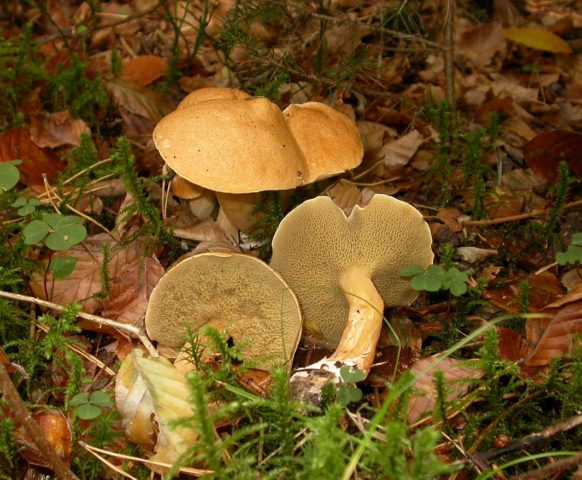Content
The red-red oiler is an edible representative of the mushroom kingdom. It is ideal for frying, salting and marinating. But in order not to make mistakes when collecting and not to collect poisonous specimens, you need to be able to recognize the species by appearance, know the place and time of growth, and also carefully look at the photo.
What does a red-red oiler look like?
The tawny butterfly is a rare edible specimen. During mushroom picking, it is impossible to pass by this beauty, since it has a bright red-red cap and a tubular layer, reminiscent of a camelina in color. The mucous layer that appears during rainy weather will help to distinguish the two species.
Description of the cap
The diameter of the cap of the red-red oiler is 10-150 mm.At a young age it has a hemispherical shape; with age it straightens and becomes flat. The rough surface is covered with a large number of scales, painted bright orange. After rain, a mucous membrane appears on the surface.
The color of the cap can be varied: orange-yellow, pale orange, red-brown. With age, the color of the cap darkens. You can often notice snow-white flakes along the edges of the cap, remaining from the white blanket that covers the tubular layer in young specimens.
The light yellow flesh is dense, fleshy, and when mechanically damaged it turns reddish. The tubular layer is formed by angular, orange-yellow, irregularly shaped tubes.
Description of the leg
The cylindrical stem of red-red mushrooms is up to 10 cm long and 35 mm thick. The upper part is crowned with a filmy ring, which was formed from a snow-white bedspread.
Above the ring the flesh is lemon-colored, the lower part is lemon-orange. The leg is fibrous, fleshy with a faint mushroom aroma.
Is the Russet Butterfly Edible or Not?
The red-red forest dweller can be eaten. In terms of taste, it belongs to group 2 of edibility.
Where and how does the red-red oiler grow?
Red-red mushrooms are a rare species, so to collect it you need to know its time and place of growth. This species is very popular in Europe, it grows in the Alps and Finland. In Russia, red-red boletus is found in Western Siberia, Altai, Krasnoyarsk Territory and Irkutsk Region. Red-red fish prefer coniferous forests with lime-rich soil.Fruiting occurs from July to the end of September.
Doubles of the red-red oiler and their differences
The tawny specimen has edible counterparts. These include:
- Kozlyak. Externally, the appearance is very similar to the moss fly. But you can recognize it by its slimy brown cap. The stem and cap are the same color, the flesh is lemon-colored, and during mechanical damage it becomes red-brown. Goats prefer to grow in coniferous forests in regions with a temperate climate. Fruiting occurs from July to September.
- Cedar oiler. An edible specimen with a dark brown cap. In young mushrooms it has a hemispherical shape; with age it becomes fibrous and cushion-shaped. The yellow-brown leg grows up to 10 cm, the flesh is fleshy, fibrous, with a slight mushroom aroma. The species grows in young cedar and coniferous forests. It can be found in the Far East and Siberia. Fruiting occurs when the pine tree blooms from July to the end of September.
- Early oiler. Belongs to category 2 of edibility. Early oiler is common in pine forests and grows from June to September in the Caucasus. It often grows in large families, so when you find a mushroom clearing, you can quickly collect a whole basket.
How to prepare red-red boletus
The red-red mushroom belongs to group 2 of edibility. It reveals its taste when fried, stewed and canned. Before cooking, the mushrooms are cleaned and boiled in salted water. You can also make preparations for the winter: freeze and dry. Dried butter beans are stored in paper or cloth bags in a dark, dry place. Shelf life is about 1 year.
Conclusion
The tawny butterfly is a delicious mushroom that is ideal for preparing many dishes.But in order not to make mistakes during mushroom hunting and not to collect poisonous specimens, you need to know the varietal characteristics, look at photos and study the time and place of growth.















